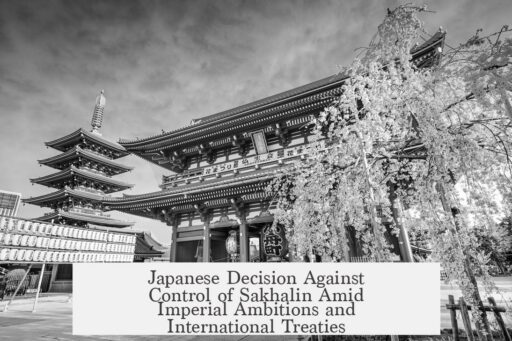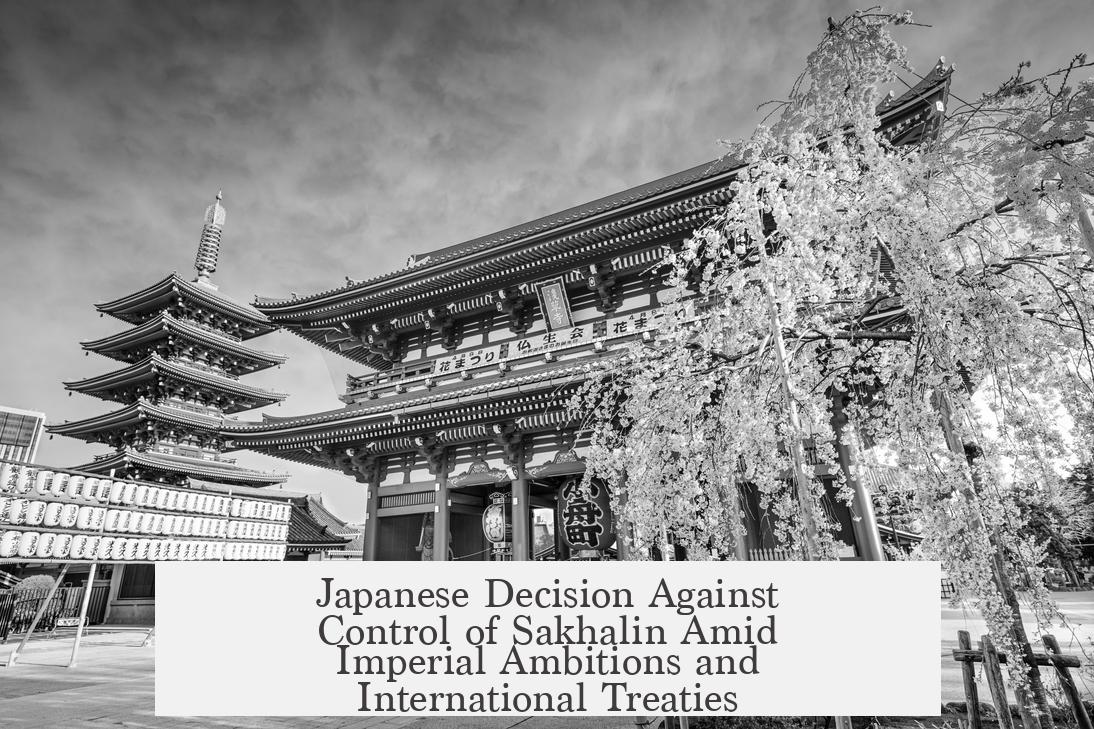The Japanese did not take full control of Sakhalin due to a combination of early disinterest, competing territorial priorities, and historic treaties favoring Russian sovereignty. Although Japan briefly controlled southern Sakhalin after the Russo-Japanese War, broader geopolitical decisions and military outcomes ultimately limited their hold and led to Soviet control post-World War II.
Japan’s early approach to Sakhalin was hesitant. The island was remote and lacked strong historical or economic pull compared to other regions. In the 19th century, Japan was focused on developing Hokkaido, itself a frontier, making Sakhalin seem even more distant and less attractive. The island’s harsh climate and limited resources relative to Japan’s priorities reduced interest further.
Japanese imperial ambitions centered largely on Korea, Manchuria, China, and Taiwan—regions rich in strategic and economic value. Sakhalin did not rank high on the imperial agenda, partly because its environment resembled Hokkaido but was colder and more isolated. Japan preferred territories where it could exert stronger control and gain immediate benefits.
Regarding treaties, the 1875 Treaty of St. Petersburg was decisive. Japan traded all claims over Sakhalin to Russia in exchange for the Kuril Islands. This exchange reflected Japan’s relative weakness versus Russia at that time and the desire to consolidate more manageable territories.
During the Russo-Japanese War (1904–1905), Japan invaded Sakhalin and gained control of its southern half. The Treaty of Portsmouth confirmed this after Japan’s victory, dividing the island at the 50th parallel. However, this partial control lasted until the end of World War II.
In WWII, Japan and the Soviet Union avoided conflict until 1945. The Yalta Agreement stipulated Soviet entry against Japan after Germany’s defeat. Acting on this, Soviet forces seized southern Sakhalin and the Kuril Islands. The promises made at Yalta and the Soviet military push led to the full Soviet takeover, ending Japanese control.
- Sakhalin was initially too remote and lightly valued by Japan
- Japan prioritized Korea, Manchuria, and Taiwan over Sakhalin
- 1875 treaty ceded Sakhalin to Russia in exchange for Kurils
- Japan controlled southern Sakhalin after 1905 but not the whole island
- Soviet invasion in 1945 ended Japanese presence on Sakhalin
Why Did the Japanese Not Take Control of Sakhalin?
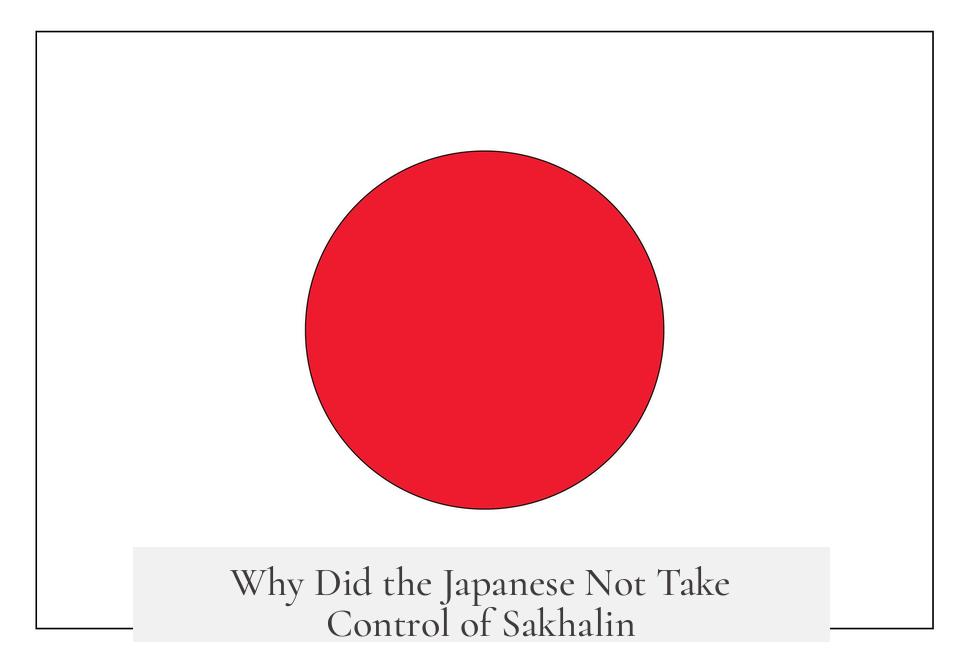
The Japanese did not take full control of Sakhalin primarily because the island was remote, less appealing compared to other territories, and was diplomatically and militarily negotiated away in favor of other ambitions.
So, why exactly did Japan, known for its late 19th and early 20th-century imperial ventures, leave Sakhalin largely under Russian influence? Let’s unpack the story with some historical context, strategic decisions, and surprising little-known facts that reveal a much more complex picture than a simple territorial contest.
1. Sakhalin: A Cold, Remote Island No One Really Wanted at First
Imagine Japan in the early 1800s. Its frontiers looked pretty different. Hokkaido, the northernmost large Japanese island, was still largely wilderness — Sapporo, one of its key cities, had only been founded in 1876. Sakhalin, lying just north across the water, was even more isolated, harsher in climate, and frankly not on anyone’s vacation list.
According to historians, Japan showed little interest in Sakhalin before the late 19th century. Sure, there were some informal Japanese and Russian presences on the island, but neither country considered it a priority. Japan’s gaze was fixed elsewhere, focused on developing its own frontier (Hokkaido) and watching its growing imperial ambitions in areas closer to home.
And to be frank, Sakhalin wasn’t exactly a prize for Japan: it resembled Hokkaido in resources but was colder, more barren, and harder to settle. Why invest precious resources in conquering a place that offered no obvious advantage when Korea and Taiwan were calling out?
2. Japan’s Imperial Ambitions Had Other Favorites
Japan’s history of imperialism looks more like a targeted shopping list than a random grab bag. It had set its sights on Korea centuries before, with Toyotomi Hideyoshi’s failed invasions in the 16th century marking early interest. Fast forward to the early 20th century: Korea, Manchuria, parts of China, and Taiwan all figured prominently in Japan’s expansion priorities.
Compared to these, Sakhalin just didn’t make the cut as a high-priority target. It lacked the population density, agricultural potential, and strategic advantages that these other regions provided. So while Japan began flexing military muscles elsewhere, Sakhalin remained a lesser concern, more of a distant cousin than a close relative in their imperial family.
3. The 1875 Treaty of St Petersburg: A Diplomatic Surrender
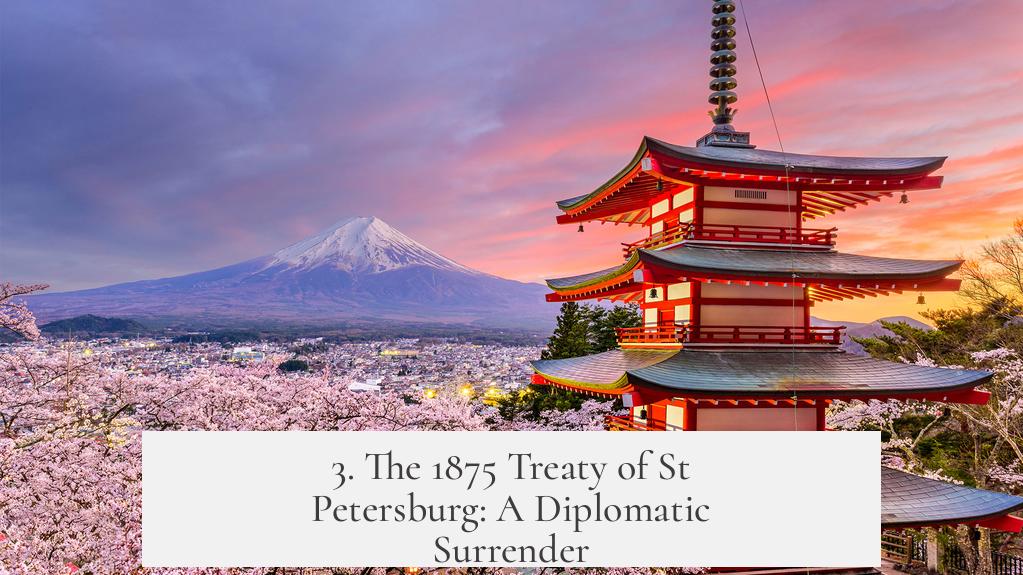
A key moment arrived in 1875 with the Treaty of St Petersburg. Japan agreed to cede all claims to Sakhalin to Russia. In return, Russia handed over sovereignty of the Kuril Islands. This swap reflected the relative power balance: Russia was stronger in the north, and Japan knew it had limited options. Symbolically, this act showed Japan’s recognition that taking on Russia over Sakhalin wasn’t worth the fight at that time.
Negotiations like these aren’t just about land—they’re about saving face, picking battles wisely, and securing stronger positions elsewhere. Japan got the Kurils, which were closer and more manageable, in exchange for relinquishing the much larger and colder Sakhalin.
4. The Russo-Japanese War and Partial Control of Sakhalin
During the Russo-Japanese War of 1904-1905, Japan took a more active stance. The Japanese army invaded Sakhalin and, following their victory, the Treaty of Portsmouth handed them the southern half of the island, divided roughly at the 50th parallel. This gave Japan a foothold on Sakhalin but still left the northern half under Russian control.
Why only half and not the whole island? Japan faced logistical and strategic constraints and was more interested in consolidating gains closer to Korea and Manchuria. Managing a large, harsh island far from supply lines wasn’t worth the risk—plus, they had bigger prizes.
5. The WWII Period: Peace, Promises, and Soviet Action
Strikingly, Japan and the Soviet Union stayed relatively at peace through much of World War II. Neither wanted to open another front when they had bigger battles elsewhere. The Yalta Conference in 1945 sealed the fate of southern Sakhalin. The Soviet Union agreed to enter the war against Japan three months after Germany’s surrender.
True to the agreement, in August 1945, Soviet forces seized southern Sakhalin and the Kuril Islands. This move effectively ended Japanese control of any part of Sakhalin and cemented Soviet dominance. This wasn’t a surprise military setback—it was an expected geopolitical outcome shaped by great power negotiations.
So, What’s the Bottom Line?
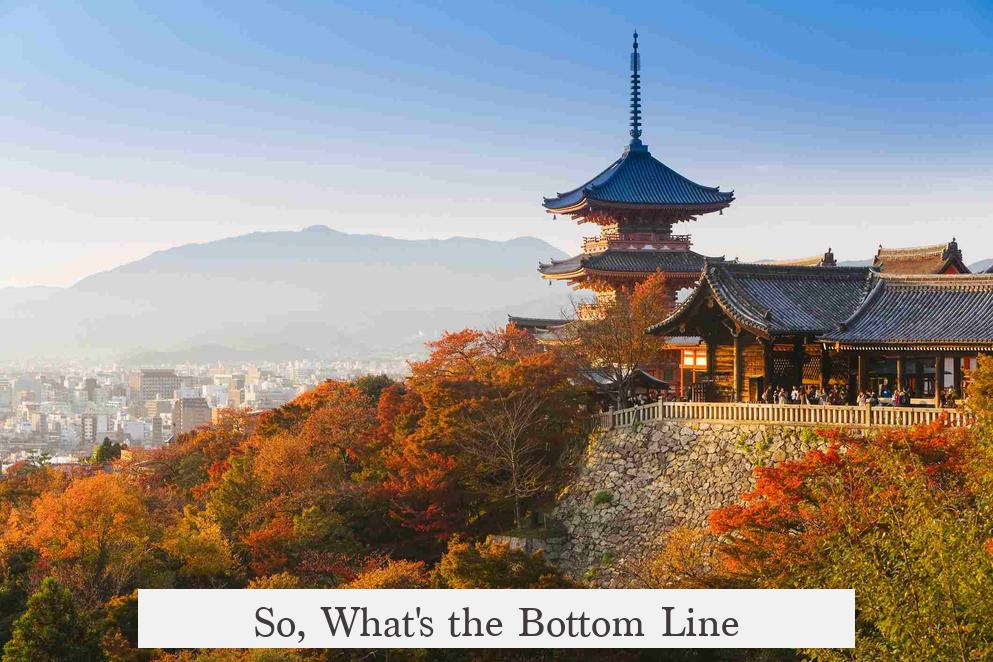
- Sakhalin was *remote* and less appealing for Japan compared to warmer, more economically and strategically attractive places like Korea, Taiwan, and Manchuria.
- The island was historically *not a priority*, and Japan initially lacked interest, focusing instead on domestic frontier development and other imperial conquests.
- Treaties like St Petersburg (1875) and Portsmouth (1905) legally divided Sakhalin’s control, reflecting political and military realities.
- Even when Japan controlled part of Sakhalin, it wasn’t the core focus of their empire-building, limiting their investment and presence.
- WWII’s endgame and the Yalta agreement sealed Soviet control, closing the chapter on Japanese ambitions there.
Would Japan have preferred to control all of Sakhalin if circumstances differed? Possibly. But realpolitik, geography, and sheer priorities shaped a path that made Sakhalin a side note in Japan’s imperial story rather than a front-and-center conquest.
Interesting takeaway:
The story of Sakhalin reminds us that not all land grabs are created equal. Sometimes, it’s not about wanting territory, but about picking the right battles at the right time. Japan’s imperial adventure is a lesson in patience, pragmatism, and — dare we say — shrewd negotiation, rather than just outright conquest.
So next time you hear about imperial Japan, remember Sakhalin. That chilly, distant island that Japan looked at… and then looked away from, politely handing it off and focusing on other, warmer spots on the map.
